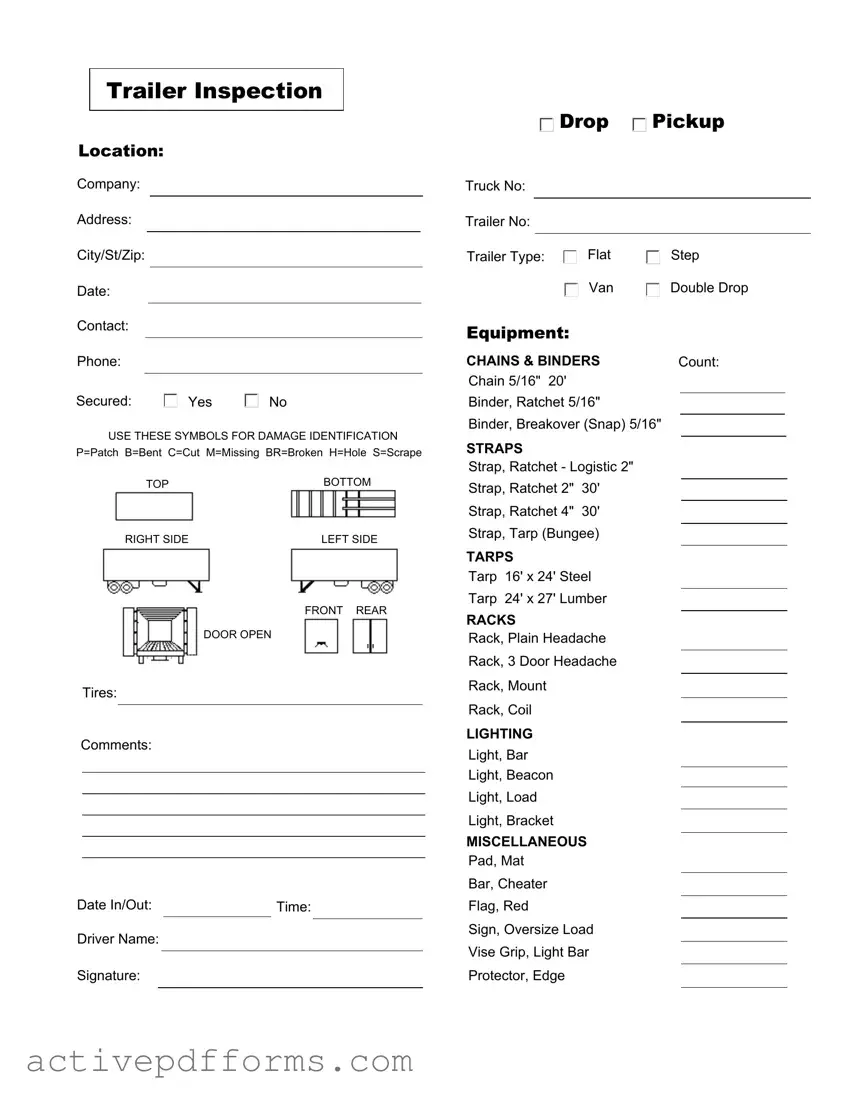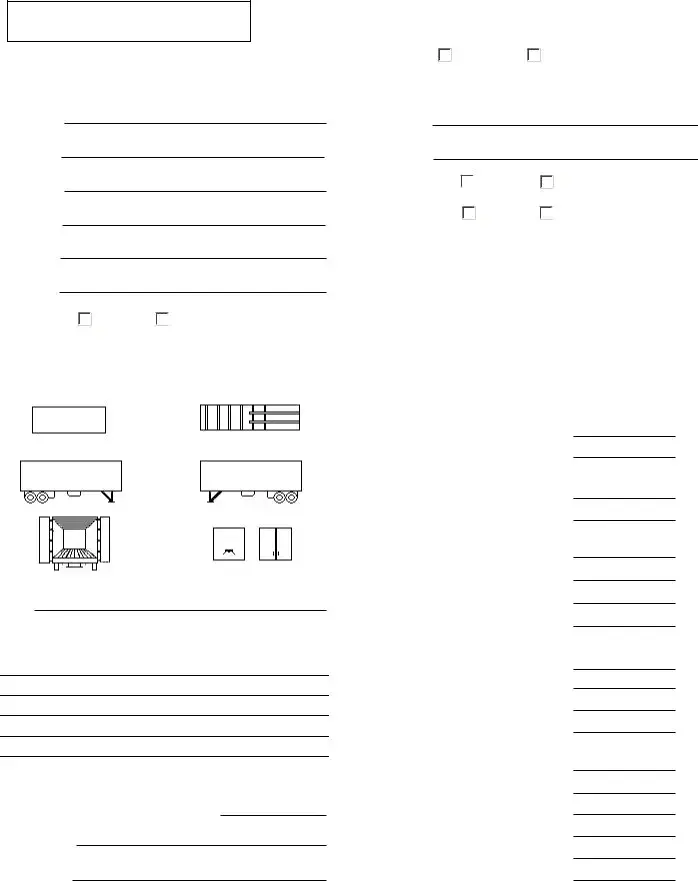Free Trailer Inspection PDF Template
A Trailer Inspection form is a comprehensive document used to assess and document the condition of a trailer before and after transport. It captures details such as the location of pickup and drop-off, company details, contact information, and specifics about the trailer, including its type and equipment. Moreover, it includes sections for inspecting and recording any damage, using predetermined symbols for efficiency, and noting essential gear like chains, binders, straps, tarps, racks, lighting, and miscellaneous items to ensure a thorough check.
Edit Trailer Inspection Now

